Arkansas, nestled in the heart of the United States, is home to a diverse avian population, and among its captivating residents are 11 remarkable hawk species.
With their soaring flights and keen hunting instincts, these birds of prey contribute significantly to the state’s ecosystems.
From the iconic Red-Tailed Hawk to the elusive Northern Goshawk, each species exhibits unique behaviors and adaptations that reflect their roles in Arkansas’s varied landscapes.
In this exploration, we delve into the lives of these 11 hawks, unraveling their distinctive characteristics, habitats, and conservation efforts crucial for their survival.
Join us on a journey through the skies of Arkansas, where the intricate tapestry of nature is woven by these majestic raptors.
11 Hawks in Arkansas
Let’s learn about the lives of 11 Hawks in Arkansas, their scientific distinctions, varying populations, and their vital roles in maintaining ecological balance.
1. Red-Tailed Hawk
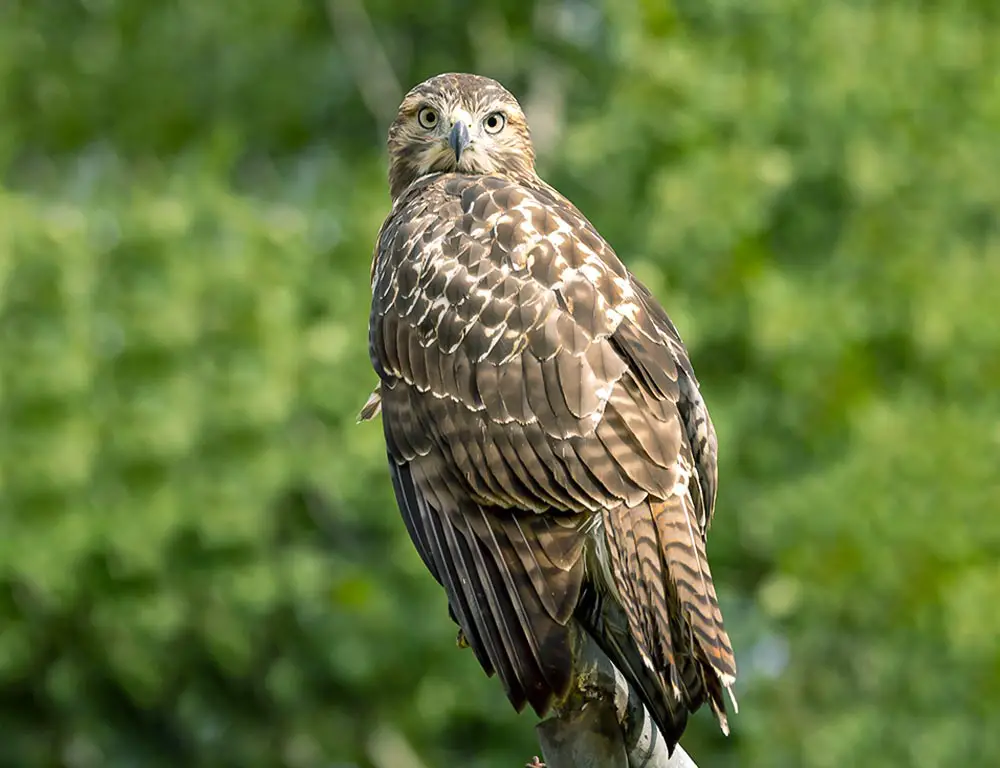
- Scientific name: Buteo jamaicensis
- Category: Birds of Prey
- Population: Abundant and widespread
- Life span: 10-25 years
- Size: 18-26 inches
- Weight: 2-4 pounds
- Status: Least Concern
The Red-Tailed Hawk’s distinctive rusty-red tail is a common sight in Arkansas. These birds of prey are skilled hunters, often seen soaring high in the sky or perched on elevated spots, scanning the ground for prey.
A varied diet that includes rodents, rabbits, and birds makes them adaptable and can thrive in diverse habitats.
Red-tailed hawks are known for their impressive aerial displays and powerful talons, which they use to capture and subdue their prey. Their longevity, coupled with a stable population, reflects their successful adaptation to human-altered landscapes.
2. Cooper’s Hawk

- Scientific name: Accipiter cooperii
- Category: Birds of Prey
- Population: Stable
- Life span: 7-10 years
- Size: 14-20 inches
- Weight: 0.5-1.5 pounds
- Status: Least Concern
The Cooper’s Hawk, characterized by its sharp, rounded wings and long tail, is a medium-sized hawk found in Arkansas.
This bird is an agile predator, often navigating through dense vegetation in pursuit of small birds and mammals. With a preference for woodland habitats, Cooper’s Hawks have adapted to suburban areas, utilizing trees for nesting and cover.
Their population remains stable, indicating a successful coexistence with human activities. These hawks play a crucial role in maintaining ecological balance by controlling populations of smaller bird species.
3. Sharp-Shinned Hawk
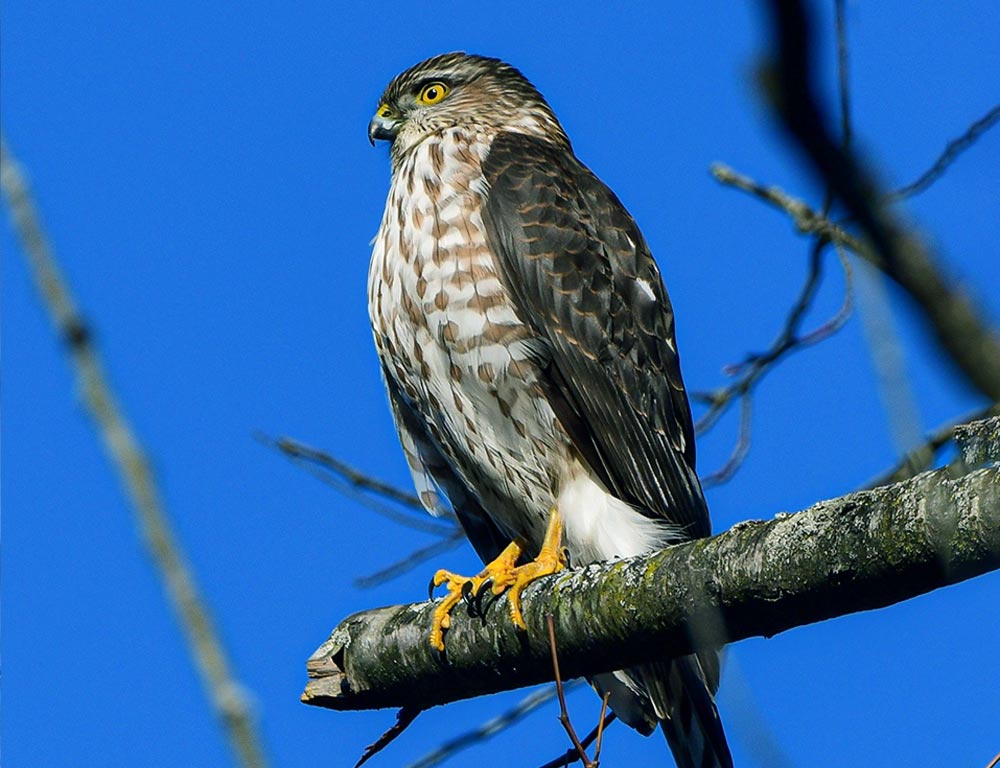
- Scientific name: Accipiter striatus
- Category: Birds of Prey
- Population: Stable
- Life span: 7-10 years
- Size: 9-13 inches
- Weight: 3-7 ounces
- Status: Least Concern
The Sharp-Shinned Hawk, a smaller cousin of the Cooper’s Hawk, is known for its short wings and long tail. These agile hunters specialize in capturing small birds in flight, making them well-suited for navigating densely vegetated areas.
Their stable population suggests successful adaptation to various ecosystems, including suburban and urban environments. Sharp-shinned hawks are essential for controlling songbird populations and contributing to the ecosystem’s overall health.
4. Osprey
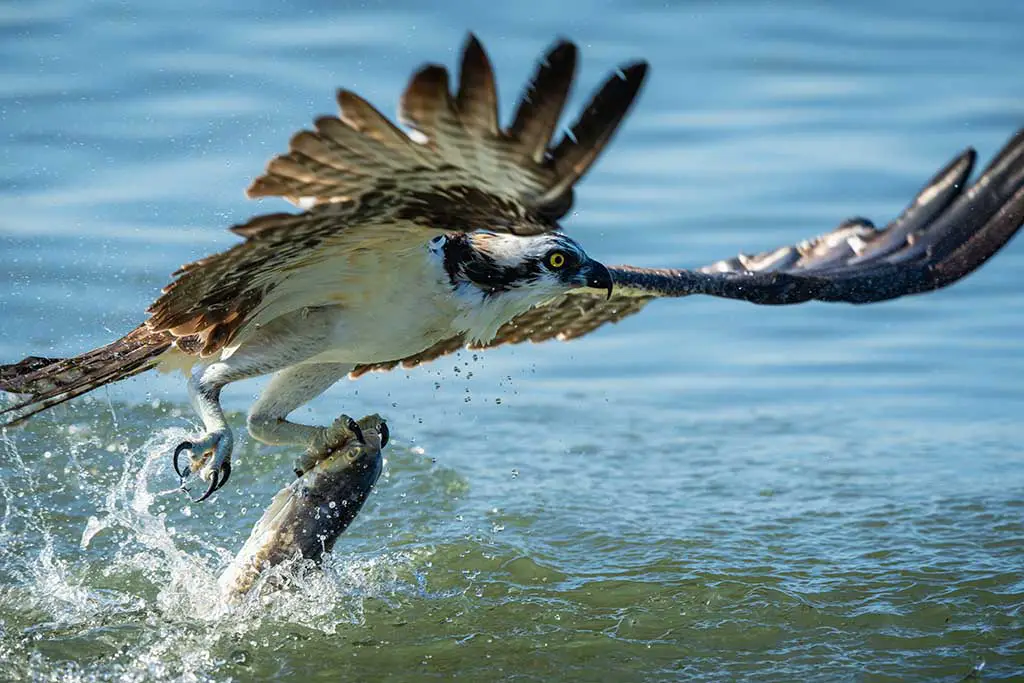
- Scientific name: Pandion haliaetus
- Category: Birds of Prey
- Population: Increasing
- Life span: 15-20 years
- Size: 21-24 inches
- Weight: 2.5-4.5 pounds
- Status: Least Concern
The Osprey, also known as the fish hawk, is easily identified by its white head and dark eye stripe. Found near bodies of water in Arkansas, Ospreys have a specialized diet of mainly fish.
With a reversible outer toe and sharp talons, they are well-adapted for catching slippery prey.
The Osprey population is rising, a testament to successful conservation efforts. These birds exhibit remarkable migratory behavior, traveling long distances between breeding and wintering grounds.
Their presence indicates the health of aquatic ecosystems, as they are sensitive to water quality and the availability of fish. Ospreys symbolize successful conservation and the importance of preserving natural habitats.
5. Broad-Winged Hawk
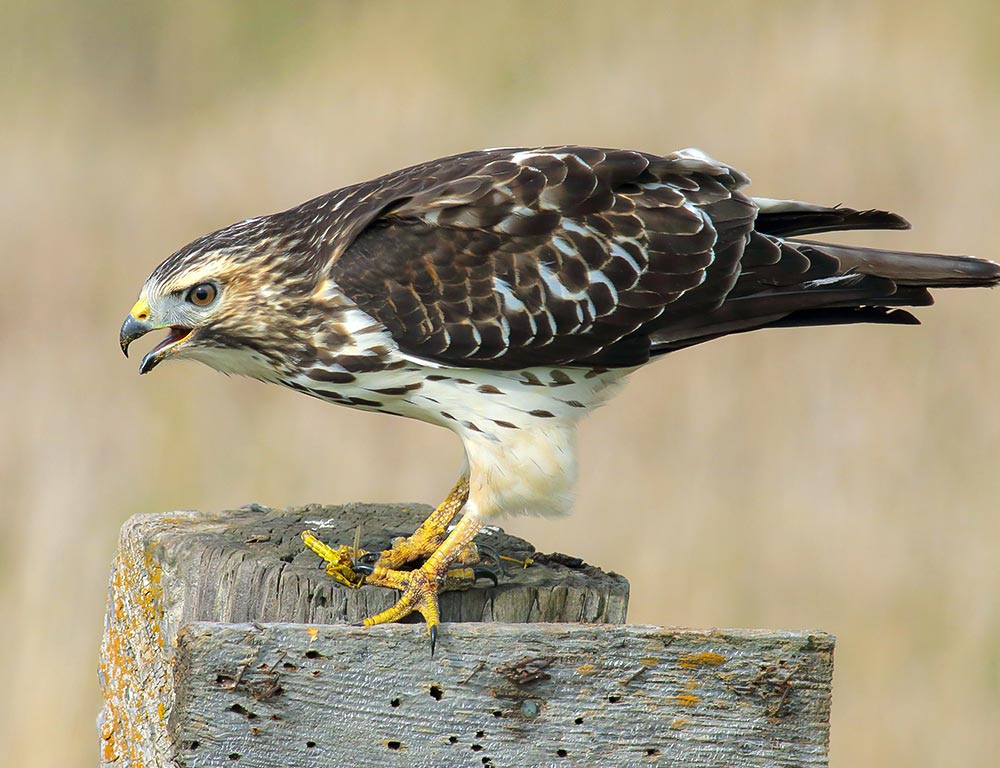
- Scientific name: Buteo platypterus
- Category: Birds of Prey
- Population: Declining
- Life span: 4-6 years
- Size: 13-17 inches
- Weight: 9-20 ounces
- Status: Near Threatened
The Broad-Winged Hawk, with its distinctively broad wings and reddish-brown tail, is known for its migratory behavior. These hawks breed in North America and migrate to Central and South America during the winter.
Unfortunately, their population is in decline due to habitat loss and other threats. Preferring wooded habitats, Broad-Winged Hawks soar gracefully in search of small mammals and reptiles.
Their migratory patterns make them an essential indicator of environmental health, and conservation efforts are crucial to ensure their continued survival.
6. Swainson’s Hawk
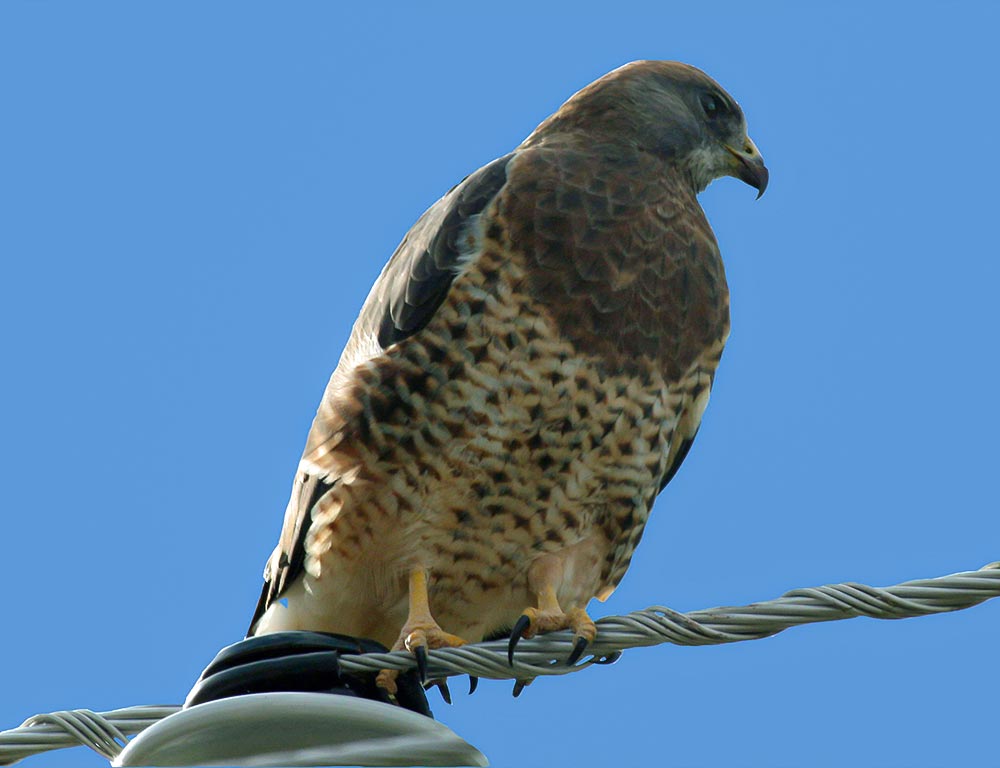
- Scientific name: Buteo swainsoni
- Category: Birds of Prey
- Population: Stable
- Life span: 5-10 years
- Size: 18-22 inches
- Weight: 1.5-2.5 pounds
- Status: Least Concern
Swainson’s Hawk is a medium-sized raptor known for its distinctive light plumage and dark wing markings.
Found in a variety of habitats, including grasslands and agricultural areas, these hawks are skilled hunters of small mammals and insects.
They are known for their impressive migrations, with some individuals traveling thousands of miles between North and South America.
Despite facing threats such as pesticide exposure, Swainson’s Hawk populations remain stable, thanks to conservation measures and their ability to adapt to human-altered landscapes.
7. Red-Shouldered Hawk
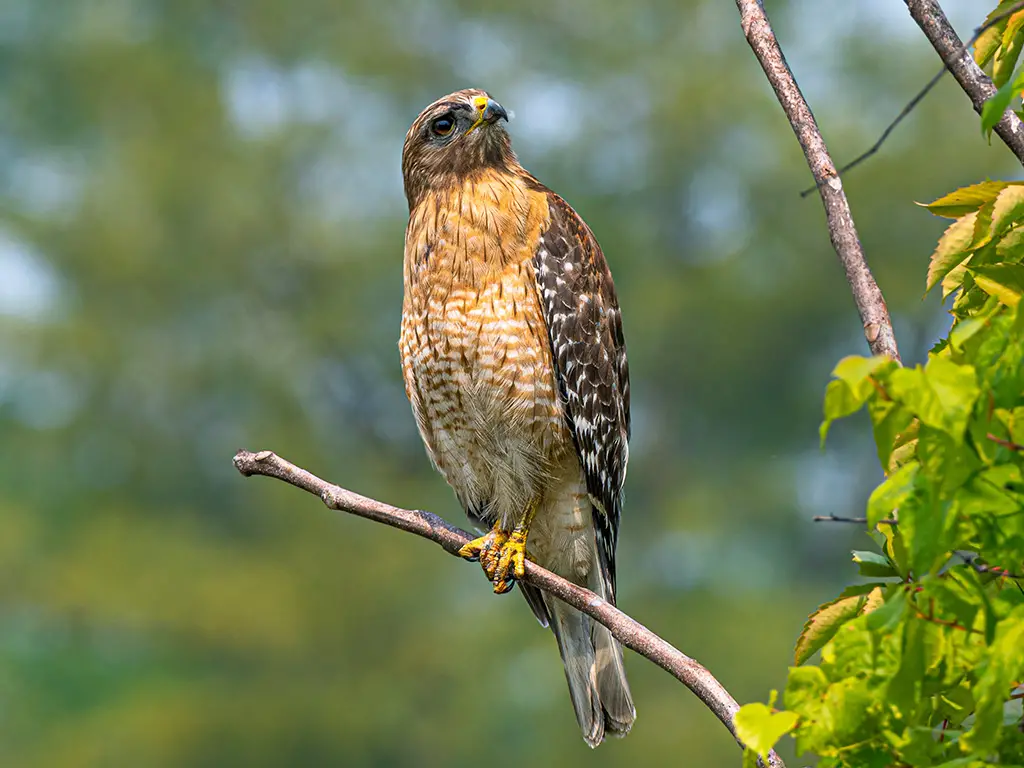
- Scientific name: Buteo lineatus
- Category: Birds of Prey
- Population: Stable
- Life span: 10-15 years
- Size: 17-24 inches
- Weight: 1-2 pounds
- Status: Least Concern
The Red-Shouldered Hawk, recognized by its striking reddish-brown shoulders, is a bird of prey commonly found in wooded habitats near water sources in Arkansas.
These hawks have a diverse diet, feeding on small mammals, reptiles, and amphibians.
They are vocal and often announce their presence with distinctive calls. Red-shouldered hawks are skilled fliers, navigating through dense vegetation with ease. Despite facing some habitat loss, their populations remain stable.
Their adaptability to various environments and their role in controlling small mammal populations make them integral components of the local ecosystems in Arkansas.
8. Northern Harrier
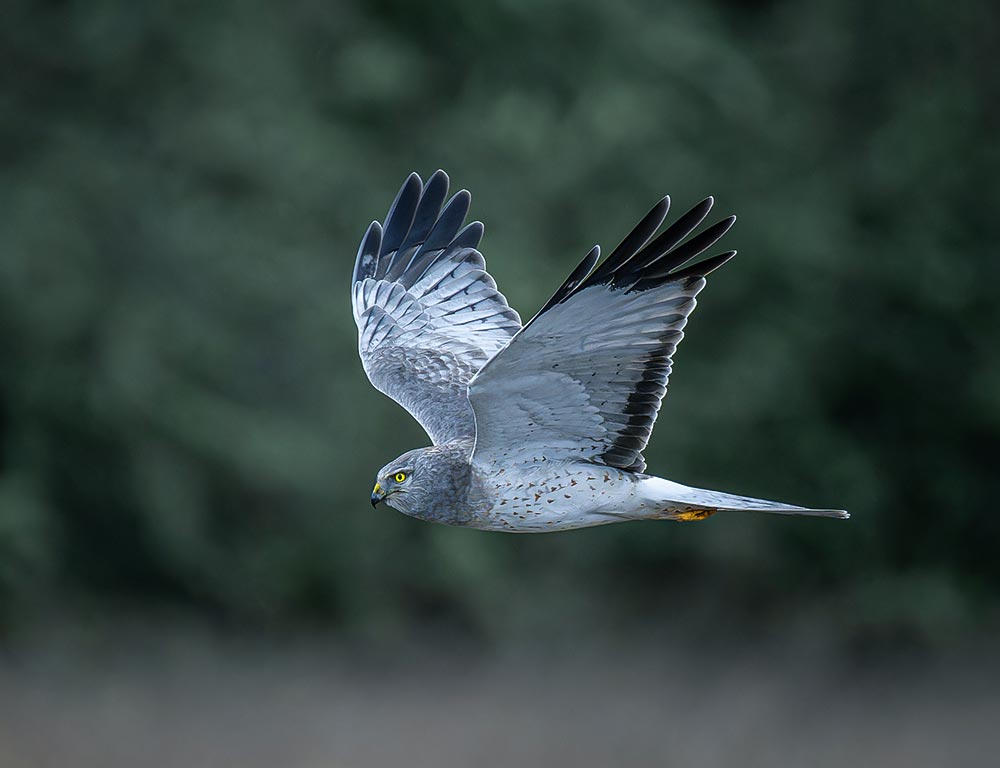
- Scientific name: Circus hudsonius
- Category: Birds of Prey
- Population: Stable
- Life span: 4-10 years
- Size: 18-20 inches
- Weight: 10-26 ounces
- Status: Least Concern
The Northern Harrier is a slender, long-winged hawk known for its low, hovering flight over marshes, grasslands, and fields.
With facial disks similar to owls, these hawks have exceptional hearing, aiding them in locating small mammals and birds. Northern Harriers are skilled hunters, preying on rodents, birds, and even insects.
Their populations remain stable, and conservation efforts focus on preserving their preferred open habitats. Their unique hunting behavior and adaptability contribute to their successful coexistence with human-altered landscapes.
9. Ferruginous Hawk
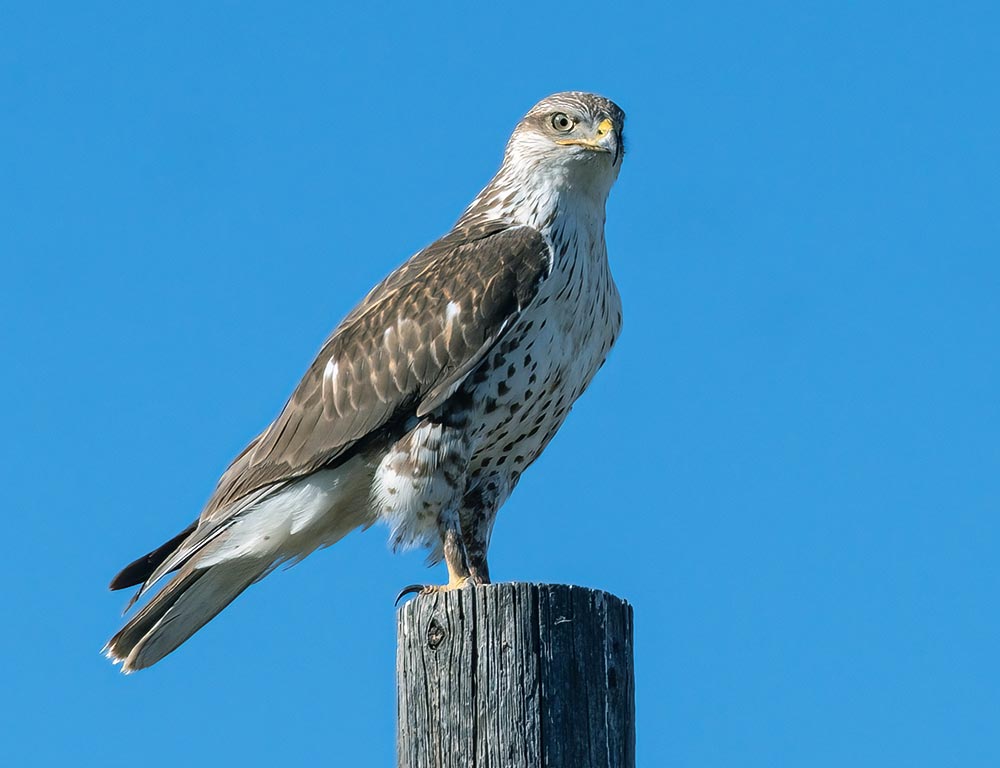
- Scientific name: Buteo regalis
- Category: Birds of Prey
- Population: Declining
- Life span: 8-12 years
- Size: 22-27 inches
- Weight: 2-5 pounds
- Status: Near Threatened
The Ferruginous Hawk is the largest in North America, recognized by its light coloration and rusty-red markings.
Found in open grasslands and prairies, these hawks primarily prey on mammals like ground squirrels and rabbits. Unfortunately, their populations are declining due to habitat loss and changes in land use.
Conservation efforts are critical to protect their habitats and ensure the survival of these impressive raptors, which play a crucial role in maintaining balanced ecosystems.
10. Rough-Legged Hawk
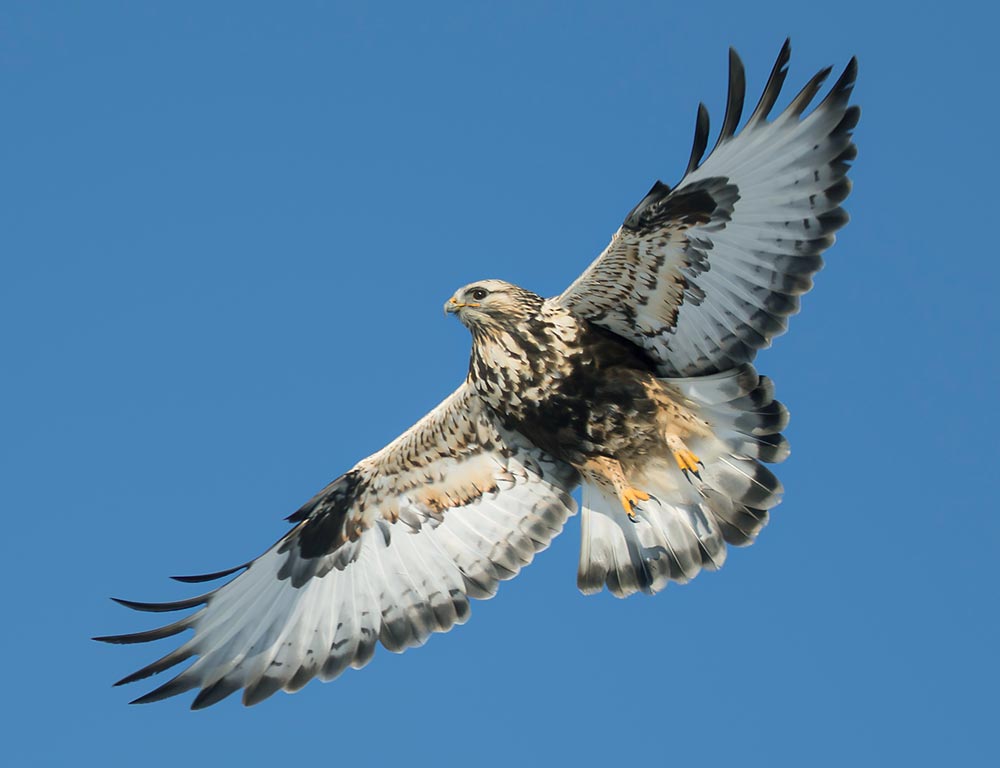
- Scientific name: Buteo lagopus
- Category: Birds of Prey
- Population: Stable
- Life span: 10-17 years
- Size: 18-24 inches
- Weight: 1.5-3 pounds
- Status: Least Concern
The Rough-Legged Hawk, named for its feathered legs, is well-adapted to cold climates and open landscapes. With a circumpolar distribution, these hawks breed in the Arctic and migrate south during the winter.
Their populations remain stable, and they are often seen hovering in search of small mammals. Rough-legged hawks are important indicators of the health of tundra and grassland ecosystems.
Their ability to thrive in harsh environments makes them resilient, but continued conservation efforts are essential for their long-term survival.
11. Northern Goshawk
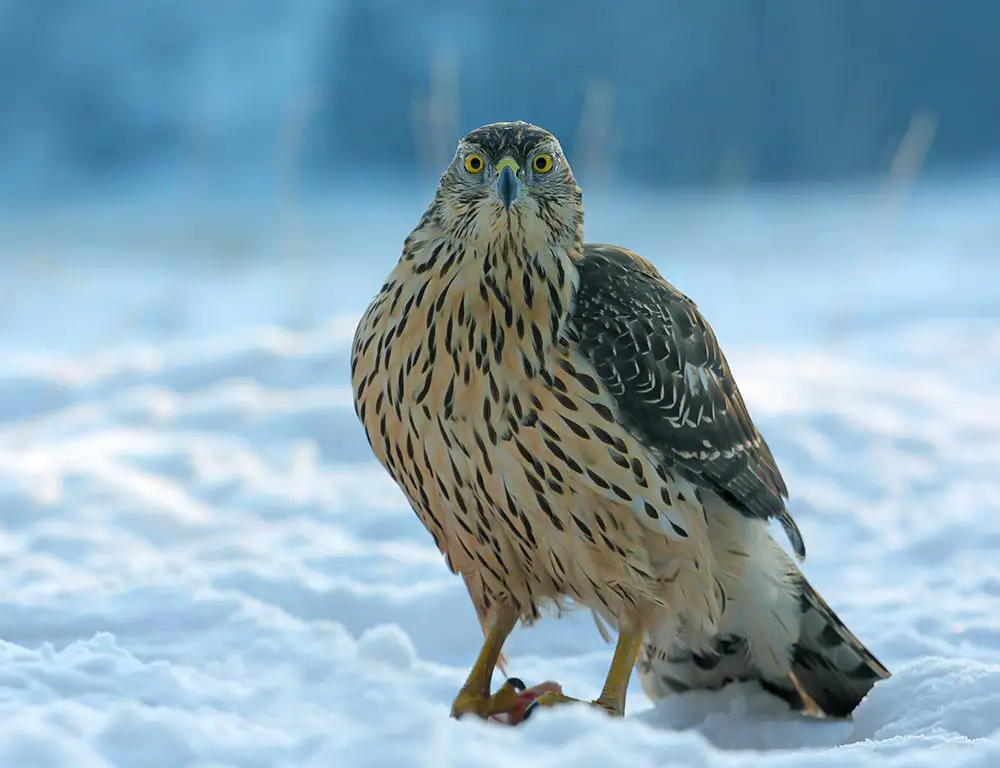
- Scientific name: Accipiter gentilis
- Category: Birds of Prey
- Population: Stable
- Life span: 7-15 years
- Size: 20-26 inches
- Weight: 1.5-3 pounds
- Status: Least Concern
The Northern Goshawk is a powerful and secretive bird of prey known for its impressive hunting skills.
Found in dense forests, these hawks are adept at maneuvering through trees in pursuit of birds and mammals. Their populations remain stable, but they face habitat loss and fragmentation threats.
Northern Goshawks are territorial and play a vital role in maintaining the balance of forest ecosystems. Conservation efforts focus on preserving their habitats and ensuring sustainable forestry practices to support these magnificent raptors.
Wrapping Up
Arkansas is home to a diverse array of hawks, each playing a unique role in the state’s ecosystems.
From the majestic Red-Tailed Hawk soaring above open landscapes to the secretive Northern Goshawk navigating dense forests, these birds of prey showcase the resilience and adaptability of nature.
While some species face habitat loss and population decline challenges, others thrive due to successful conservation efforts and their ability to coexist with human-altered environments.
Understanding these hawks’ lifestyles, behaviors, and conservation needs is crucial for preserving the delicate balance of Arkansas’s ecosystems and ensuring the continued presence of these magnificent raptors in the state’s skies.